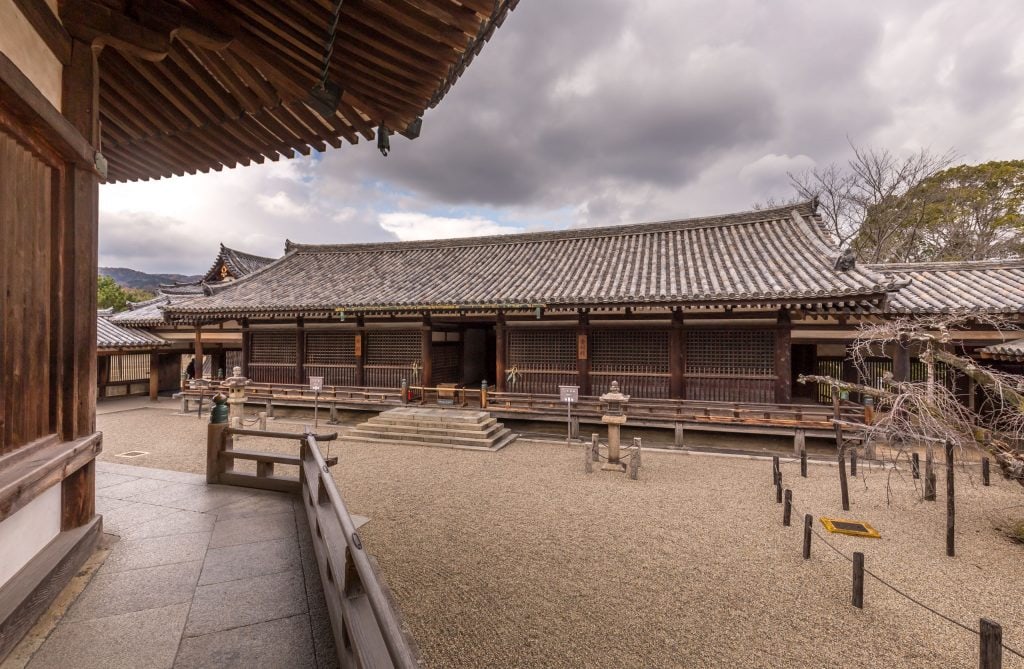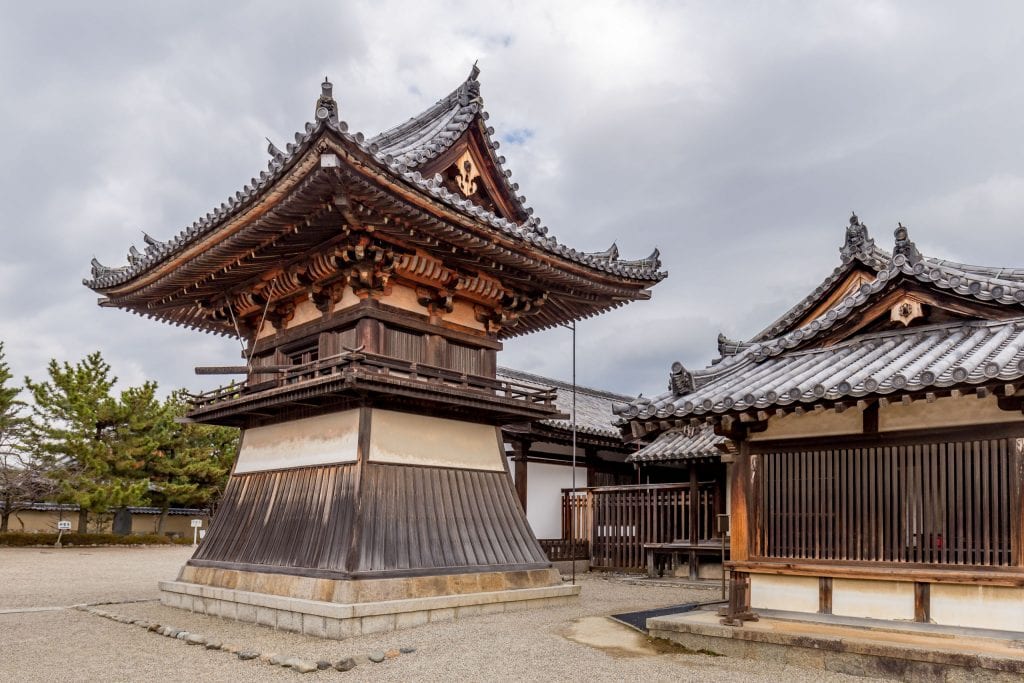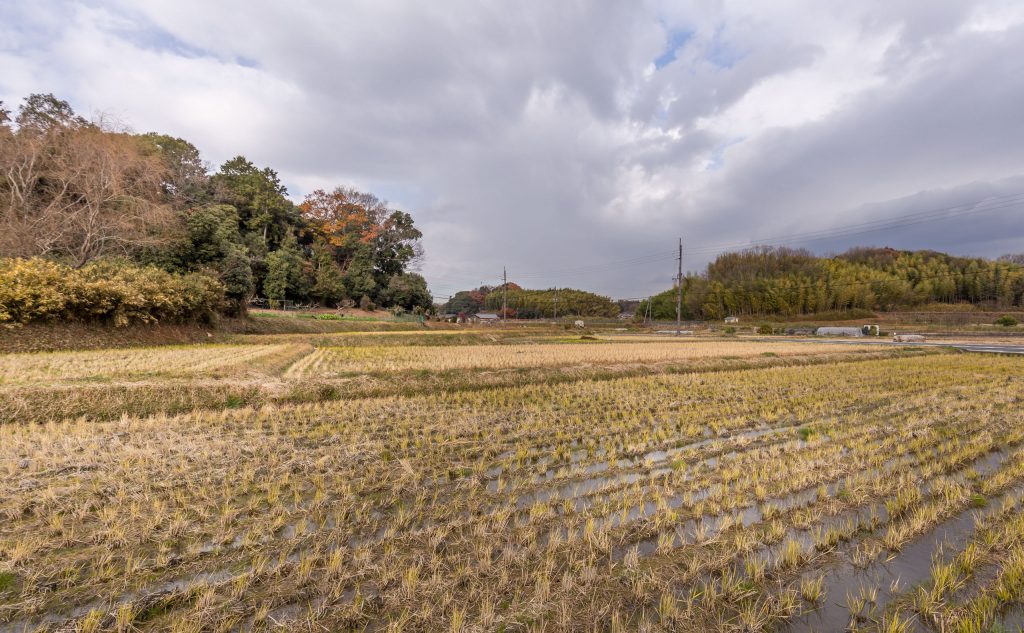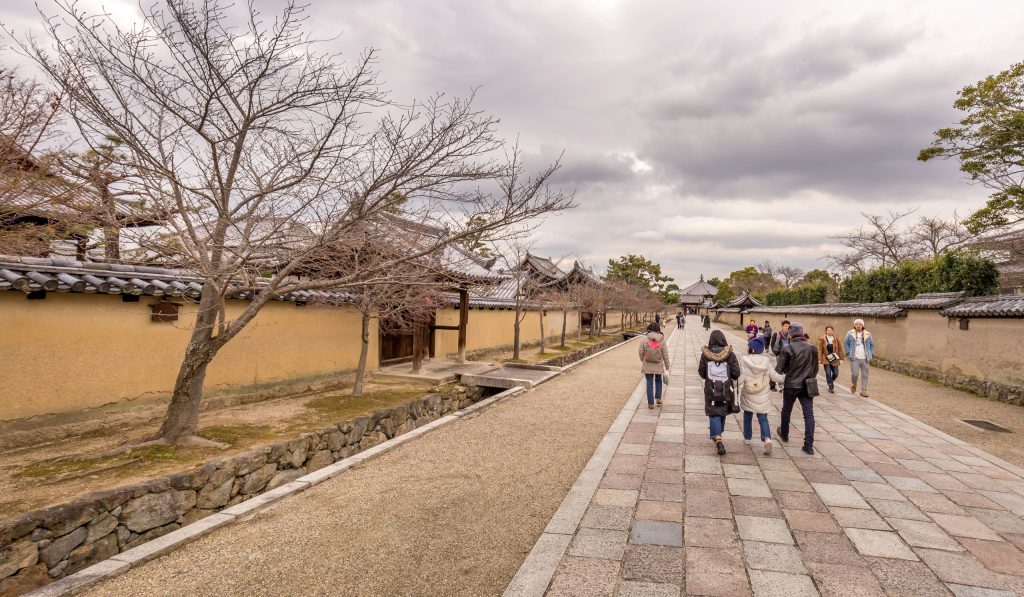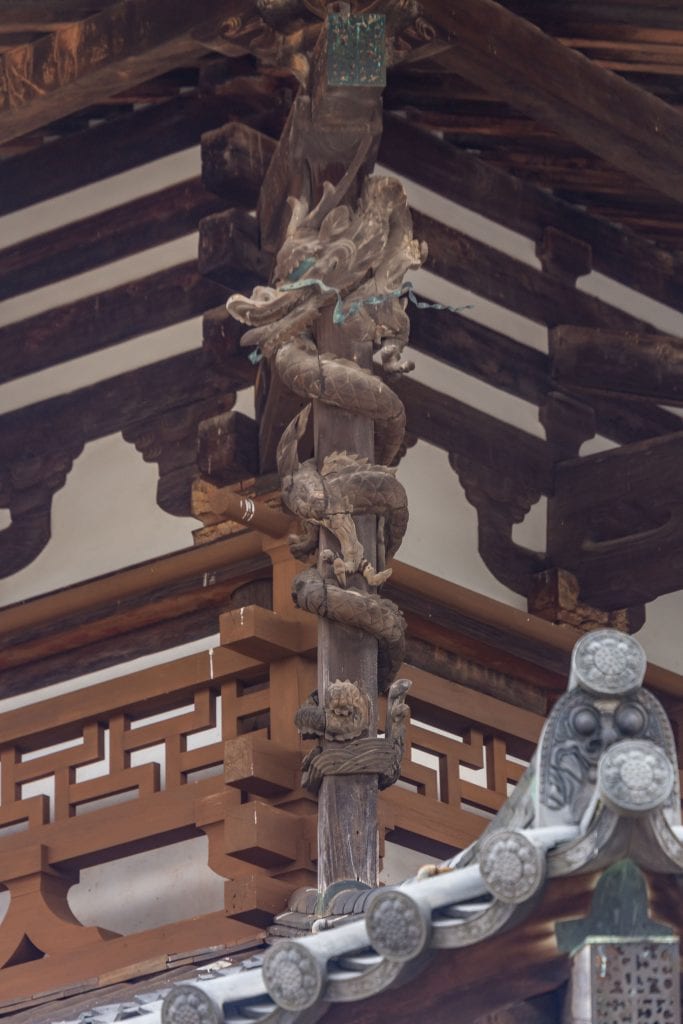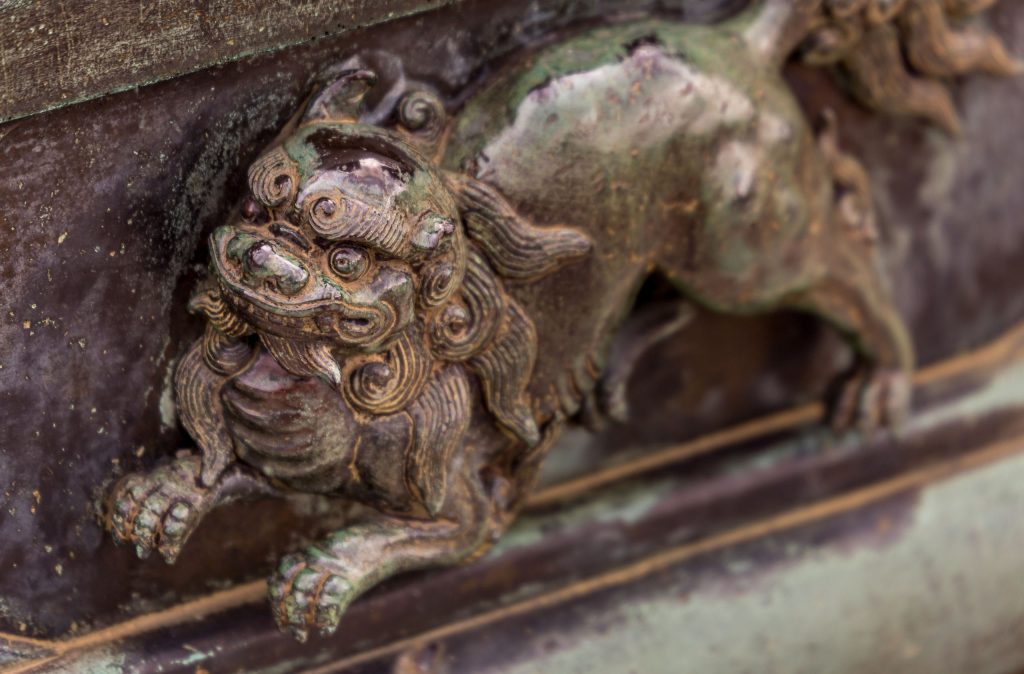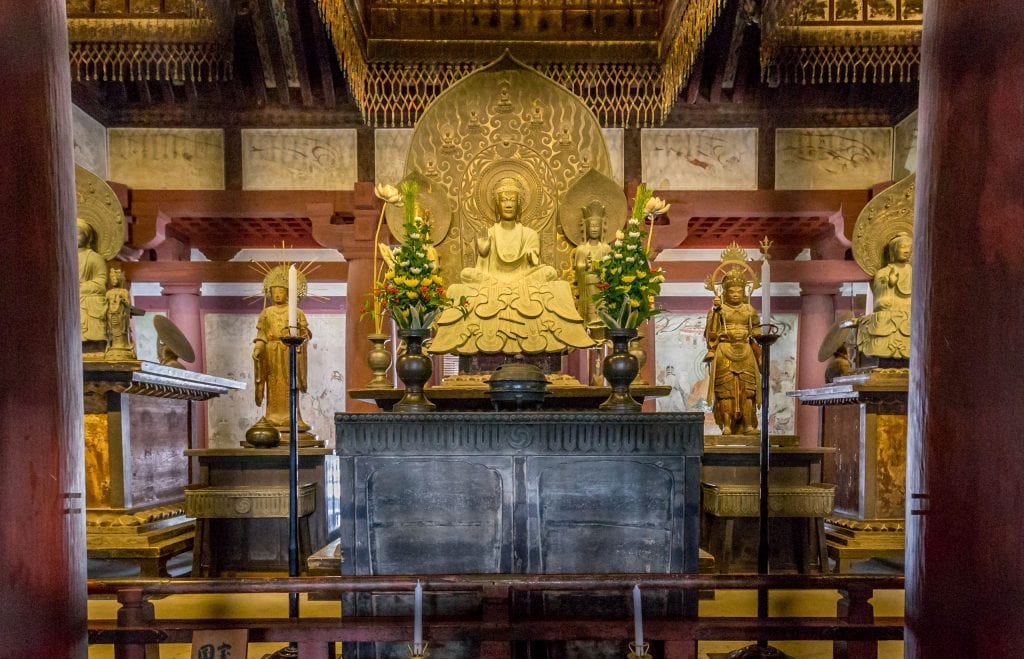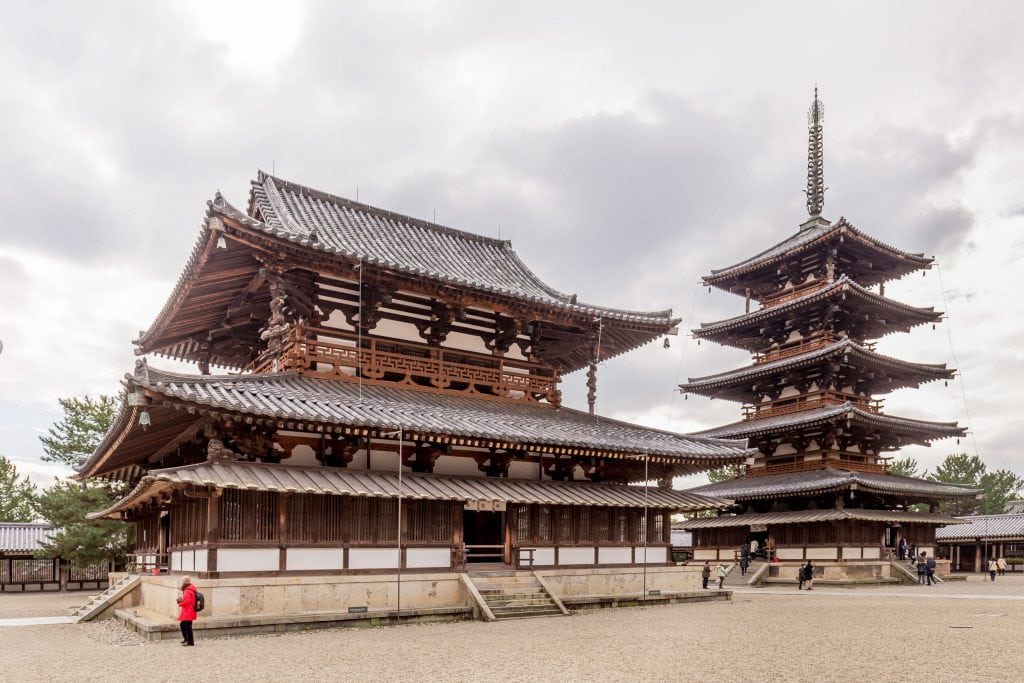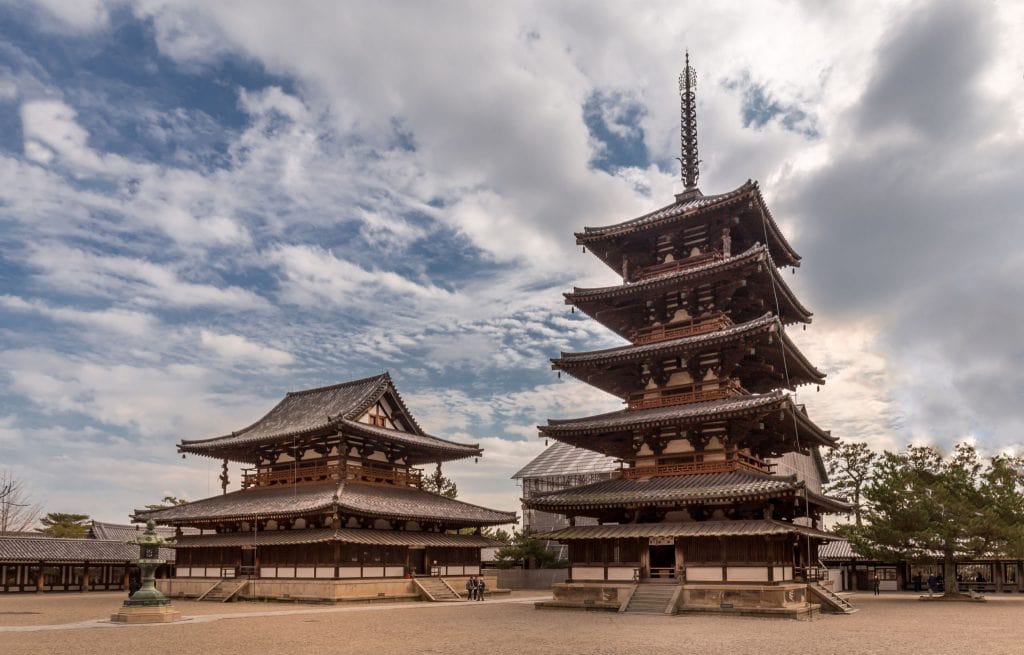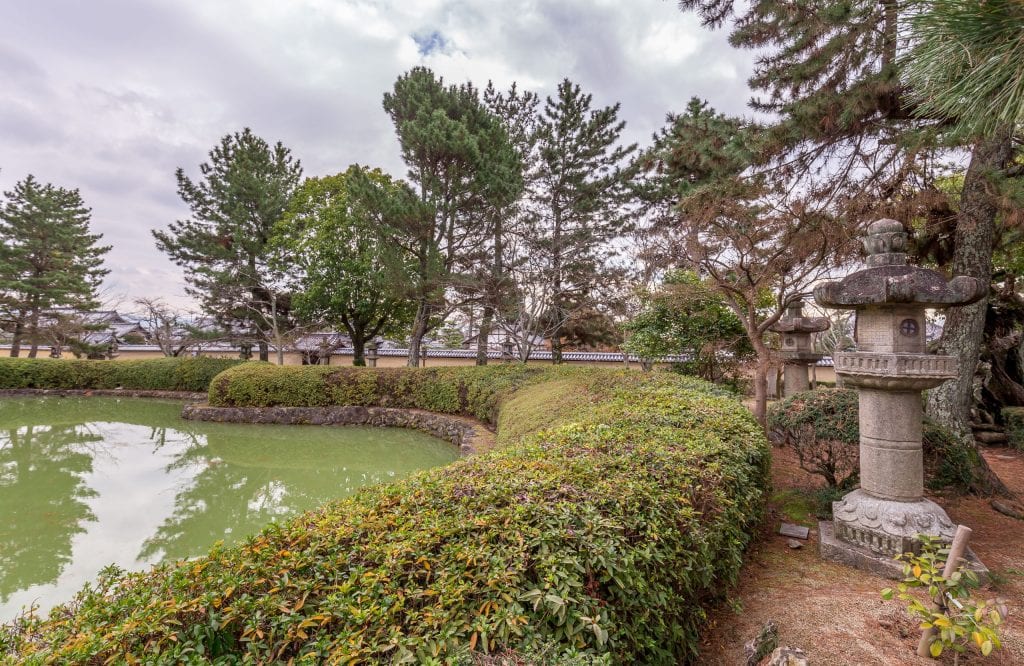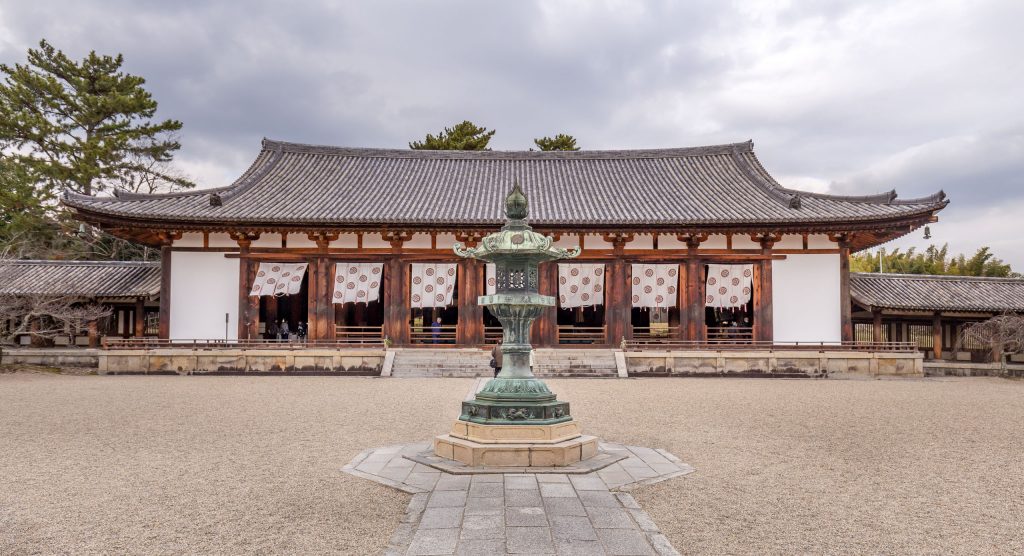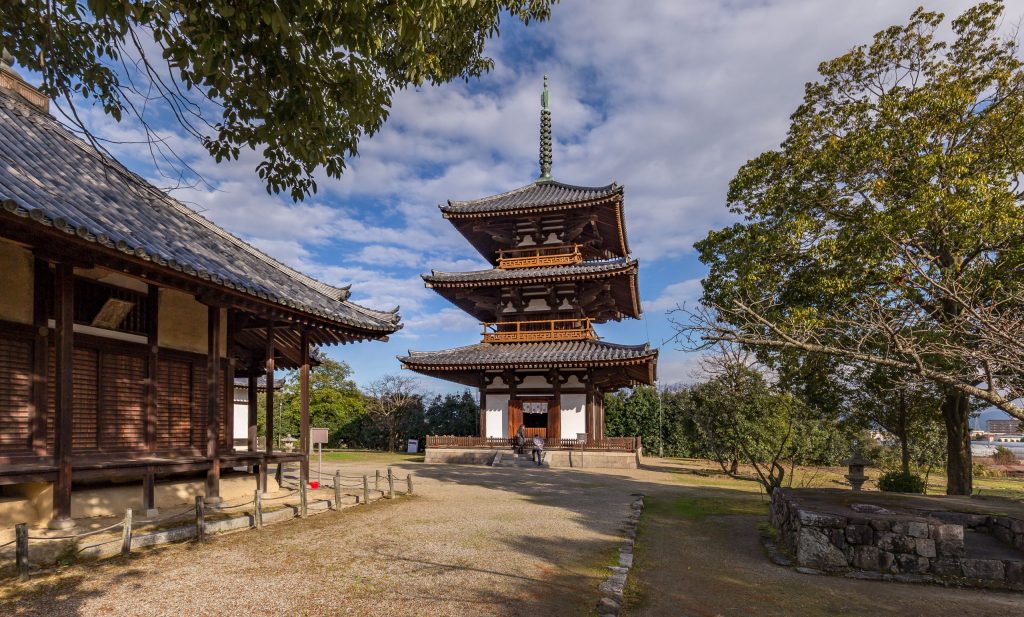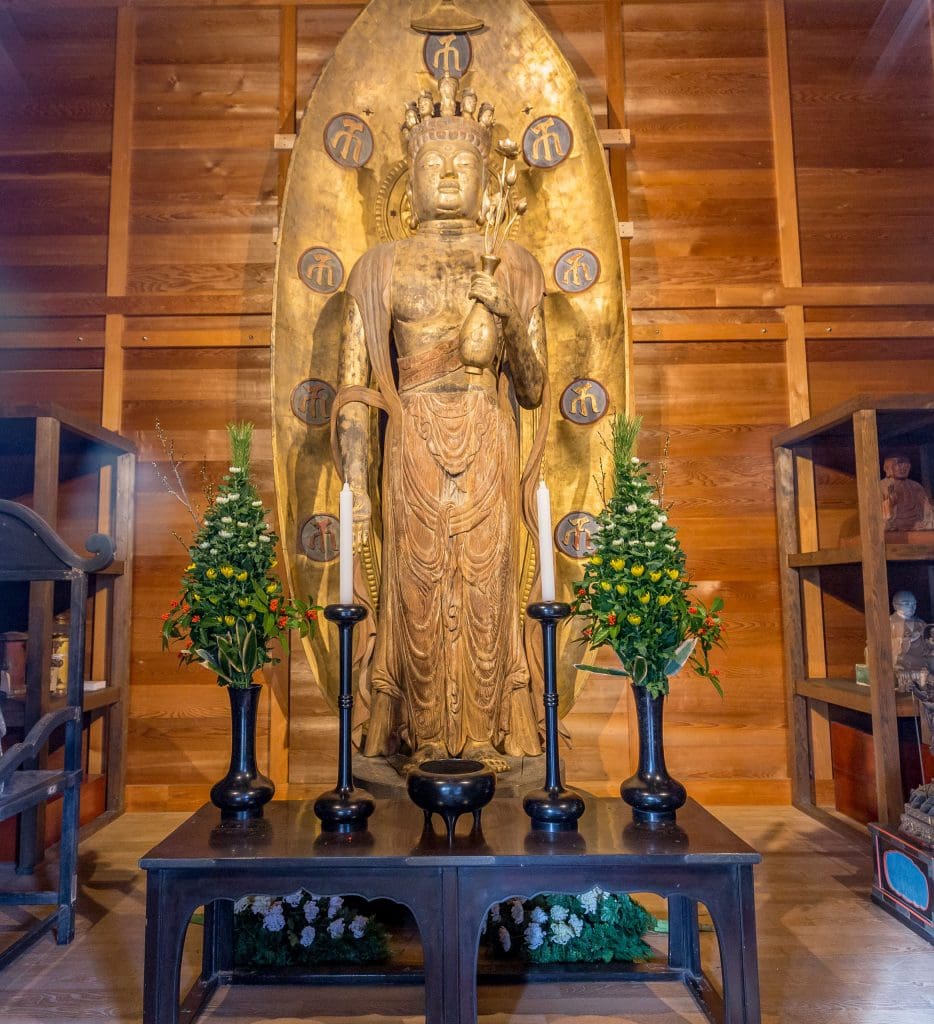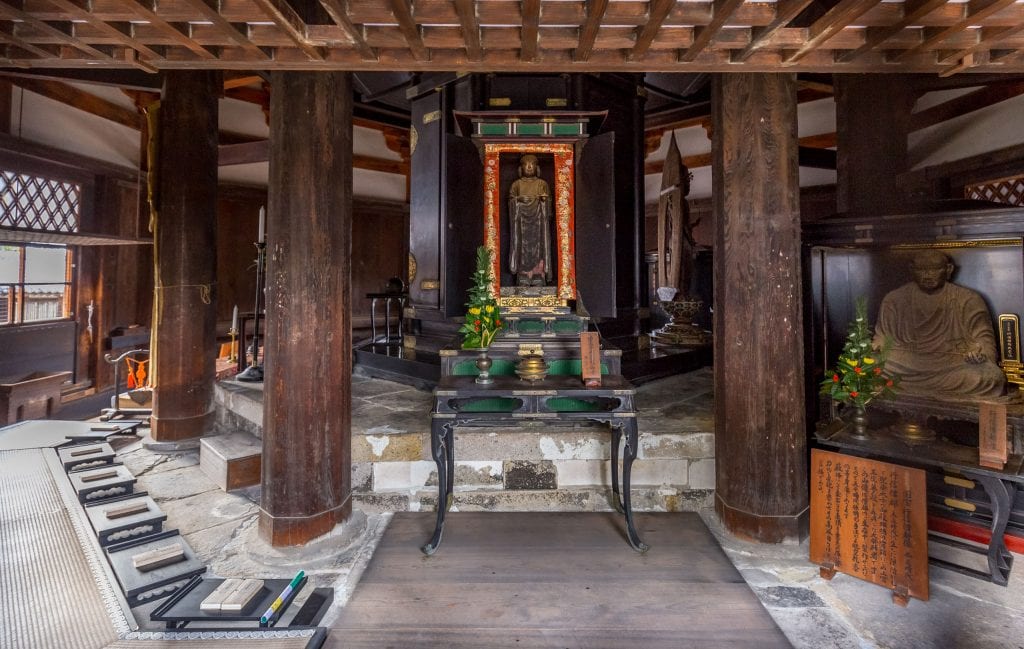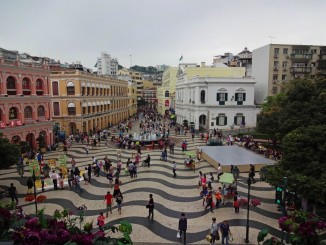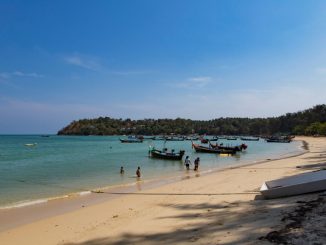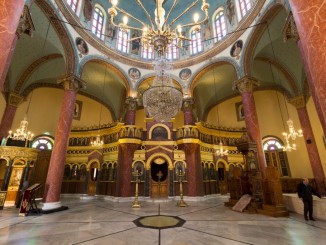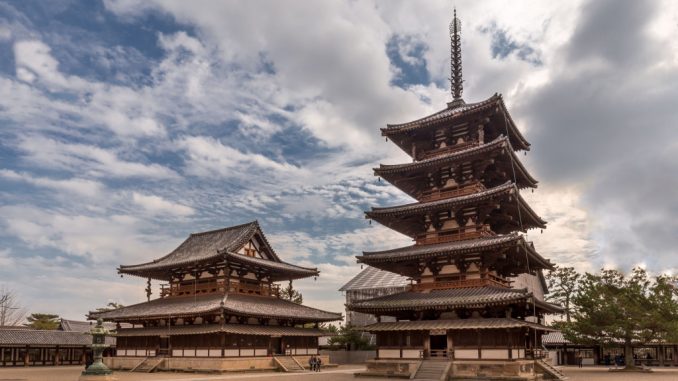
Table of Contents
I visited the Kansai region in Japan for almost two weeks (family holiday) and did many day trips from Osaka and Kyoto. One of these days I made a day trip with my daughter to Horyuji from Osaka. Horyu-ji temple area together with the Hokki-ji temple area are an UNESCO World Heritage Site called Buddhist Monuments in the Hōryū-ji Area.
These sites contain ancient wooden Buddhist structures which are the oldest existing wooden structures in the world. It was a clear and crisp cold winter day, but the cold didn’t stop us going there. After visiting Horyu-ji I must advise everyone visiting Kansai region to include a day trip there! I’ll show you a preview on what to expect and how to get there.
How to get to Horyu-ji?
I have already explained in my 2-week Japan itinerary that it’s best to buy a Kansai area rail pass which gives access to most if not all trains in the area. It’s the best way to travel. Plan the best route to Horyuji main train station. There are several apps available with train information or just use Google maps as it will also show the best route including train numbers. Exit the station on the northern side and you’ll see signs pointing into the direction of Horyu-ji. It’s just a few hundred meters by foot.
I recommend walking all the way to Hokki-ji if weather allows. The route passes along farm lands which is interesting to see after spending days in a big city like Osaka. Depending from where you depart (Osaka, Kyoto or maybe Nara) it takes up to an hour to get to Horyu-ji main station.
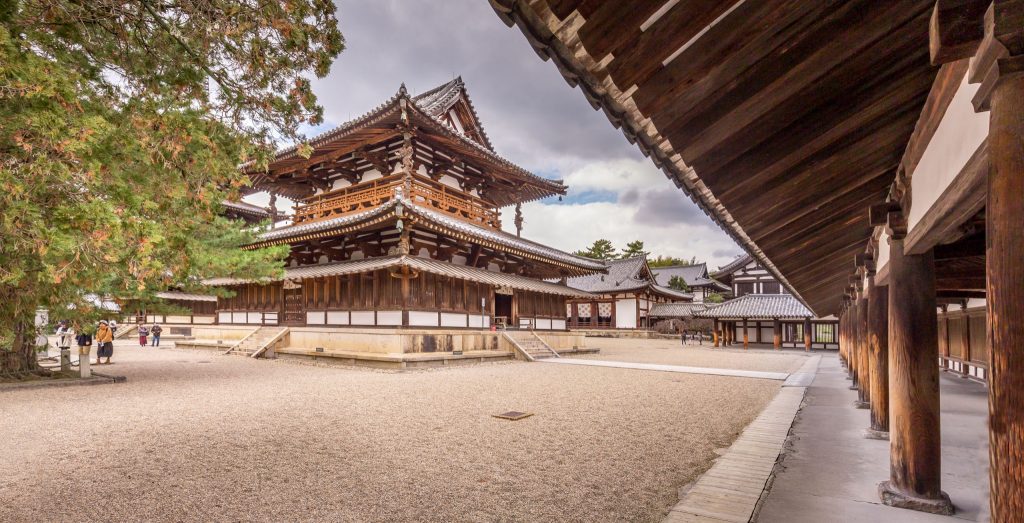
Horyu-ji area: Western temple
The Horyu-ji temple, also called Temple of the Flourishing Law, has over 40 different structures and is amongst the oldest Buddhist temples in Japan. Several of the wooden structures are the oldest in the world dating to the year 670 when prince Shotoku founded the temple. He was the first patron of Buddhism in Japan. Although the temple was first erected in 607 it got destroyed once but was directly rebuilt in 670. It has survived fire, weather, and human impact all those centuries after that. When I arrived, I was much surprised by the good state and all the wooden carved statues decorating the pagoda and hall next to it.
JAPAN – The best 14 days itinerary in Tokyo & Kansai Region: Kyoto, Osaka, Nara, Kobe
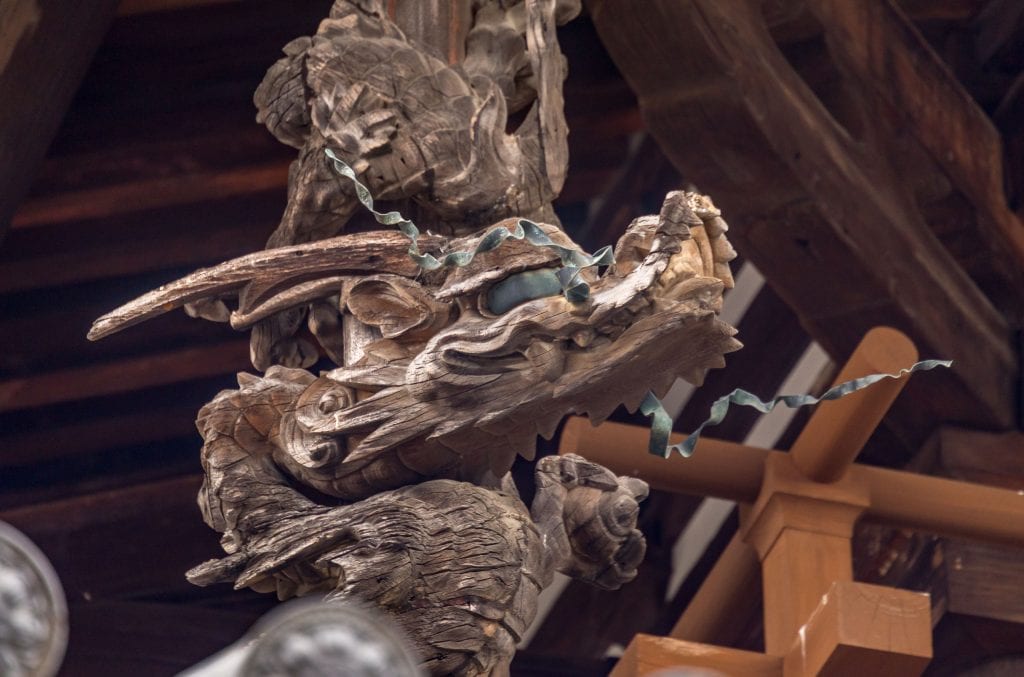
I recommend starting at the western part of the temple complex which is about a kilometer in size. This doesn’t include Hokki-ji though which is located a few kilometers out of town. If you follow the signs in town you should arrive here automatically. I entered through the Nandaimon (South Great Gate) to get access to the inner courtyard called Kairo. In the middle stands a 5-story wooden pagoda and next to it the Kondo or Golden Hall. The latter dates to 670 and makes it the oldest surviving wooden structure in the world. Make sure to visit the interior which holds beautiful fresco’s and statues.
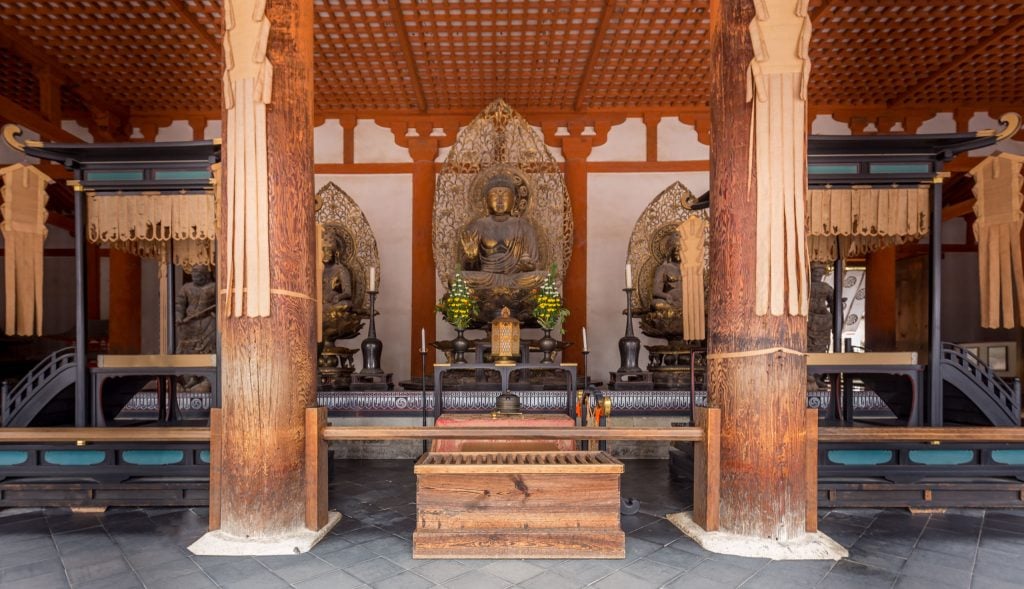
At the far northern end of the courtyard is a large hall called Daikodo which dates to the end of the 10th century. It can take well over an hour to take up the beauty here especially if you must queue to get into the Kondo. Now continue through the other gate to the Great Treasure Store Hall which is a museum holding all kinds of old artifacts found on the grounds.
The museum holds some truly magnificent pieces of art including many made of wood. Entrance to the museum is included in the entrance fee of the temple so don’t miss this museum. It’s well worth checking out as it holds the best pieces of art that survived all those centuries. Once finished continue walking towards the eastern temple complex.
Horyu-ji area: Eastern temple
The eastern part of the Horyu-ji temple complex has one important building called Yumedono. This six-sided building dates to the first half of the 8th century when it was build on the place where Prince Shotoku once lived. The hall is surrounded by various buildings forming a courtyard with the Yumedono in the middle. The eastern temple complex is much smaller as the western part and it doesn’t take more as an hour to see it. Before you go, don’t miss the beautiful bell tower just outside of the gate.
JAPAN – The best 14 days itinerary in Tokyo & Kansai Region: Kyoto, Osaka, Nara, Kobe
Behind the eastern To-in complex, where Shotoku’s mother lived, is the Chugu-ji temple which houses a famous Future Buddha statue. The temple is from another Buddhist sect and besides the statue not of real interest. As it charges another entrance fee I don’t recommend going there. You can now either return or continue to Hokki-ji pagoda. This pagoda is part of the UNESCO World Heritage Site too, but an hour walk from the eastern temple complex. I decided to check it out and it was well worth it.
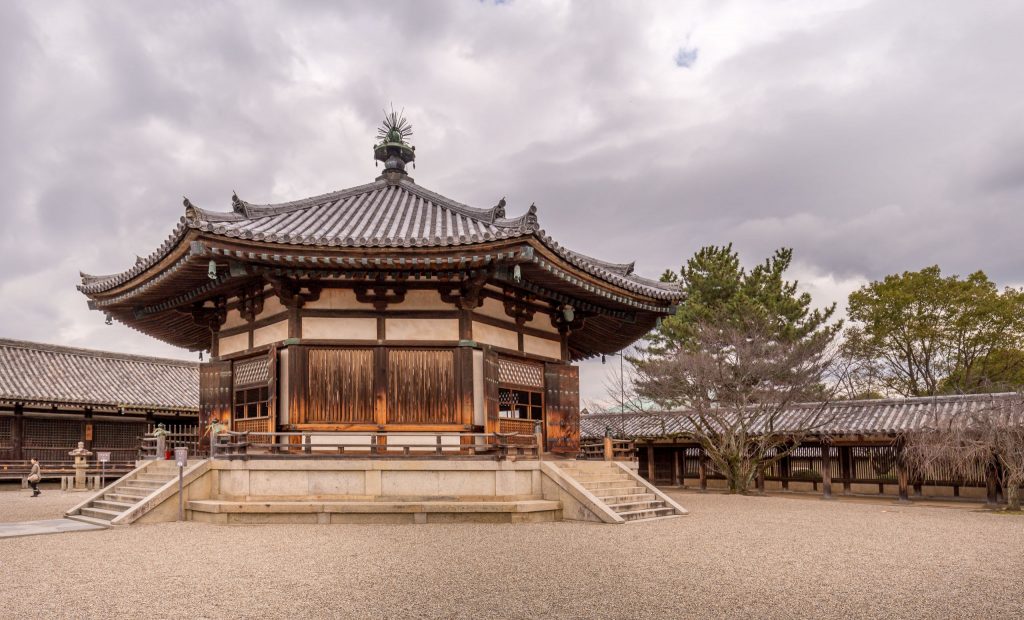
Hokki-ji area
Hokki-ji is located just outside of town, but I recommend walking there as it’s a beautiful walk through the countryside. It’s most famous for it’s 3 story pagoda and alignment of the buildings which has been an example for other temples in Japan. If you walk there you’ll pass another small temple which is worth a short visit. Along the way there are several vending machines for drinks and snacks. That came in handy as for the rest there isn’t much out there.
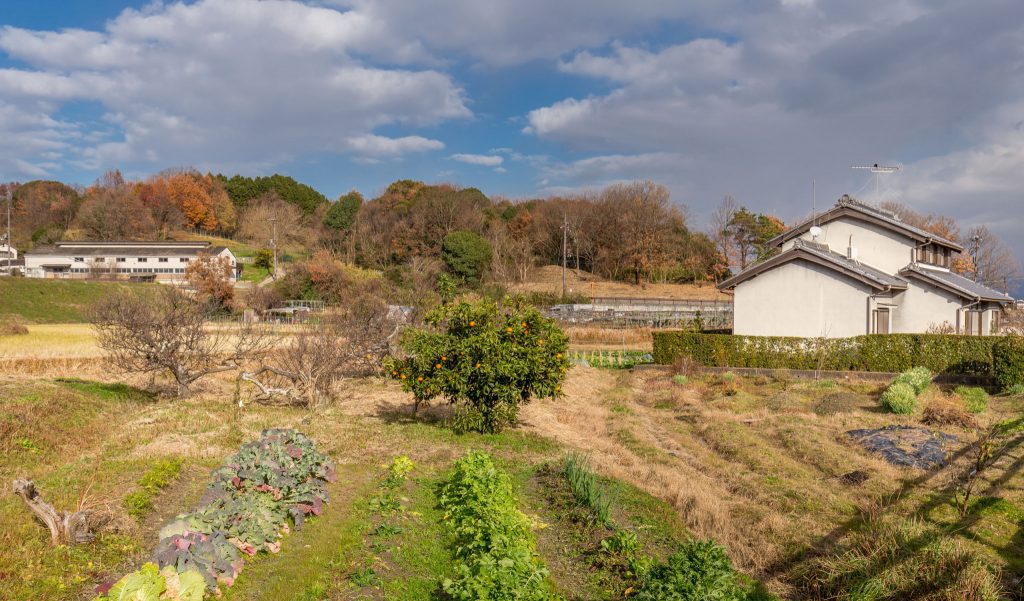
Hokki-ji doesn’t charge an entrance fee but does ask a small donation for the monks. The area is small and the pagoda the most interesting structure. There are two halls on the ground too which were closed when I visited. The pond in the middle gives a beautiful reflection of the pagoda, a great spot for a photo. It’s said, and foundations found in the area, that Prince Shotoku lectured Buddhism in a palace that once stood there. His last wish was that a temple would be built on that place. The pagoda is beautiful and if you have the time to stop by then do it. It’s not a huge complex and after 45 minutes I continued walking down the road back to the train station. I do suggest catching a taxi now if one passes by to save a bit of time.
JAPAN – The best 14 days itinerary in Tokyo & Kansai Region: Kyoto, Osaka, Nara, Kobe
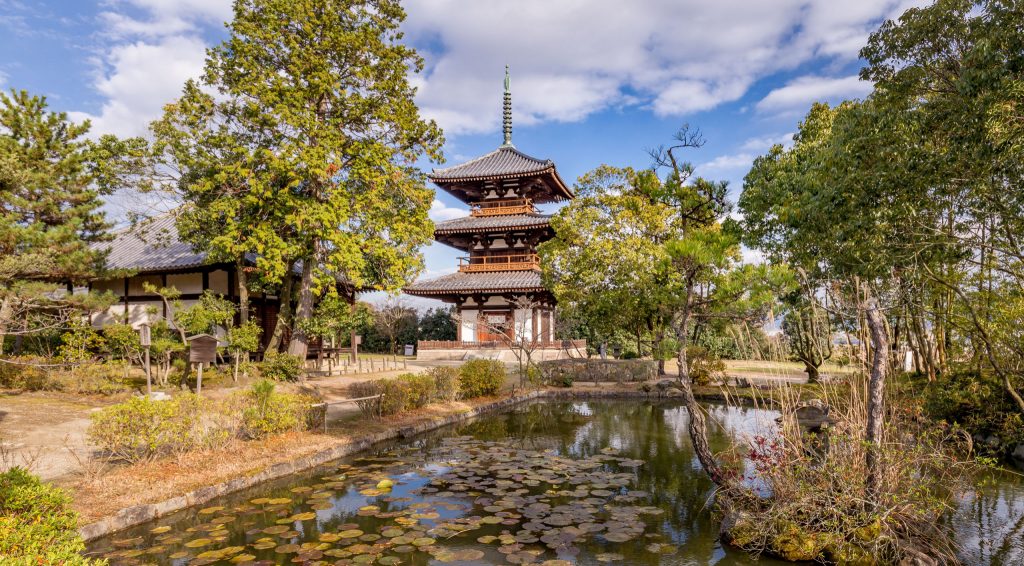
Horyu-ji and Hokki-ji both are part of the Buddhist Monuments in the Hōryū-ji Area UNESCO World Heritage Site and make up a perfect day trip from Osaka or Kyoto. I enjoyed my time there exploring these old wooden structures. I was back at the train station at 4PM and arrived back at the Intercontinental Osaka well before 5PM for the afternoon snacks served in the club lounge. My daughter still had an hour to go swimming before we headed for dinner. In the evening, I continued exploring craft beer bars in Osaka. It’s not just sake that can get you drunk in Japan! If you want to know what I did more in the Kansai region, then check out my 2-week itinerary for the Kansai region.
Stay tuned for more stories and subscribe to the newsletter or follow CTB on social media (Facebook, Twitter, Instagram including Instagram stories; on all social media you can find CTB @christravelblog) to get updated information.
Did you visit Horyu-ji and Hokki-ji too or do you have questions? Please leave a comment at the bottom of the page. Love to hear from you!
Gallery Horyuji
Click an image for a full screen gallery of more photos taken during this trip. If you like to use any photo for commercial, private or editorial use please contact first for permission and/or pricing.


